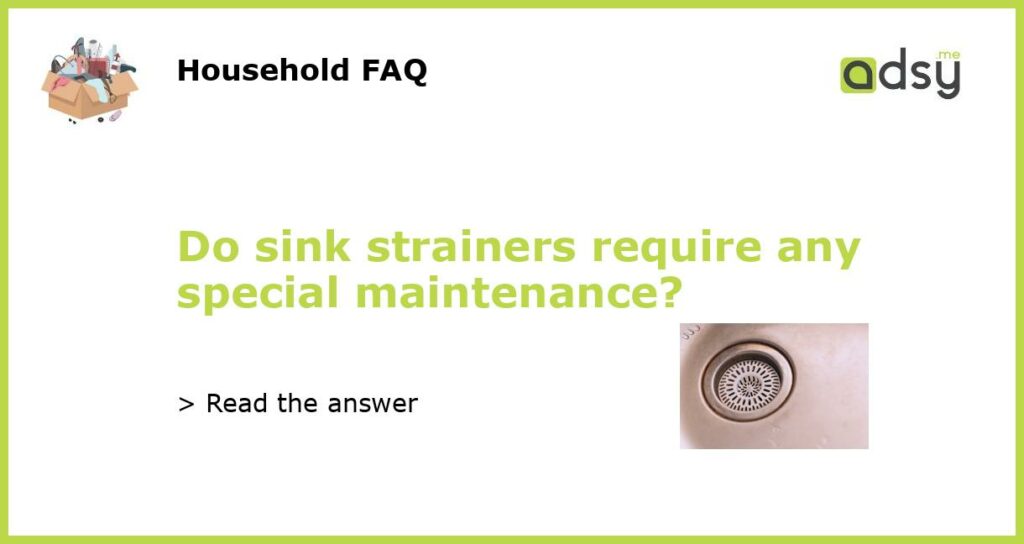Sink Strainers: What Are They?
Sink strainers are small devices placed in kitchen and bathroom sinks to prevent debris and food particles from clogging the drains. They consist of a rimmed metal or plastic basket with small perforations that trap solid waste while allowing water to flow through. Sink strainers are an essential part of the plumbing system, as they help in maintaining the proper functioning of drains.
The Importance of Regular Cleaning
While sink strainers are designed to catch and hold debris, they still require regular cleaning to ensure their optimal performance. Over time, food particles, grease, and other debris can accumulate in the strainer, causing blockages and unpleasant odors. Regular cleaning of sink strainers not only prevents clogs but also promotes good hygiene in the kitchen or bathroom.
How to Clean Sink Strainers
Cleaning sink strainers is a straightforward process that can be done using basic household items. Here are the steps:
- Remove the sink strainer from the drain. Most sink strainers can be easily lifted out of the drain by hand.
- Discard any trapped debris into a trash bag or compost bin. Use a brush or your fingers to remove any stubborn residue.
- Rinse the sink strainer under running water to remove any remaining particles.
- Fill a bowl or sink with warm water and add a few drops of dish soap.
- Submerge the sink strainer in the soapy water and scrub it gently with a brush or sponge.
- Rinse the strainer thoroughly with warm water to remove any soap residue.
- Finally, reinsert the clean sink strainer back into the drain.
Preventing Clogs and Prolonging the Life of Sink Strainers
In addition to regular cleaning, there are a few measures you can take to prevent clogs and prolong the life of your sink strainers:
- Dispose of food scraps properly by scraping plates into the trash or a compost bin before rinsing them in the sink.
- Avoid pouring grease or oil down the drain, as they can solidify and create blockages.
- Use a hair catcher in bathroom sinks and showers to prevent hair from clogging the drain.
- Install a garbage disposal unit if your sink doesn’t have one. This can help break down food waste before it reaches the strainer.
- Consider using a drain cleaner periodically to remove any built-up residue in the pipes.
When to Replace Sink Strainers
Sink strainers, like any other plumbing component, have a lifespan and may need to be replaced over time. Signs that your sink strainer may need replacing include:
- Visible damage, such as cracks or breaks in the basket or rim.
- Failure to catch and hold debris effectively, resulting in frequent clogs.
- Unpleasant odors even after cleaning.
- Excessive rust or corrosion.
If you notice any of these signs, it’s time to consider purchasing a new sink strainer. It’s recommended to choose strainers made of durable materials like stainless steel or high-quality plastic for longevity.
In conclusion, sink strainers play a crucial role in preventing clogs and maintaining the proper functioning of kitchen and bathroom drains. Regular cleaning and proper maintenance are necessary to ensure their effectiveness. By adopting a few simple habits and following the cleaning steps mentioned above, you can keep your sink strainers in optimal condition and prolong their lifespan.






